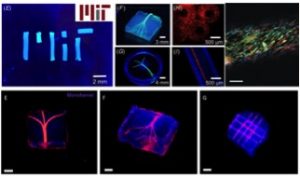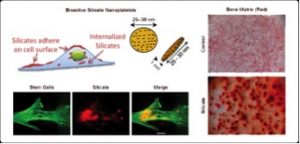Tissue Engineering
Tissue engineering is an emerging field that aims to regenerate natural tissues and create new tissues using biological cells, biomaterials, biotechnology, and clinical medicine. The main goals of tissue engineering include providing the methods for replacement and regeneration of damaged tissues, and creating tissue-like models for disease research. Recently, our team also combined scaffolds and cells to fabricate the cell-laden artificial tissues by utilizing 3D-printing techniques to create bone- and cardiovascular- like tissues. By utilizing these artificial tissues, we hope that it will allow scientists to deeply investigate the mechanisms behind the reparation of damaged tissues in regenerative medicine.
3D Bioprinting
3D bioprinting is an emerging field in tissue engineering and is widely used for a variety of applications. We use the Organovo bioprinter to create layered, 3-dimensional structures to better represent tissues as they are found in the body. Our main focus lies on printing multi-bioink, cell-laden bioink, extracellular matrix (ECM)-based materials, or natural materials; these materials mimic complex tissue structure models in vitro such as liver, bone, or cardiovascular structures that can be used for drug testing, tissue engineering, organ on chip, or biosensing applications.

Photograph of bioprinted MIT logo and replicating 3D branching networks fibers embedded in hydrogel block; and confocal image of cellular monolayer in the fiber.
Bone Tissue Engineering
Our projects involve the osteogenic differentiation of human mesenchymal stem cells (HMSCs) by a bioactive silicate nanoparticle. Through the investigative processes of these tissues, we hope to further combine nanoparticle/nanoplatelet and biocompatible biomaterials to regulate the regeneration of bone tissues.

Osteogenic differentiation of hMSCs cultured with silicate nanoparticle.
Cardiac Tissue Engineering
Our group focuses on developing functional cardiac tissue constructs using ECM-based hydrogel or nanoparticle embedded hydrogel. The hybrid materials can be useful for other tissues (such as muscle), to create tissue constructs with improved organization, electroactivity, and mechanical integrity.

Photographs of cardiac cells cultured on tropoelastin- or nanoparticle-based hydrogels.
